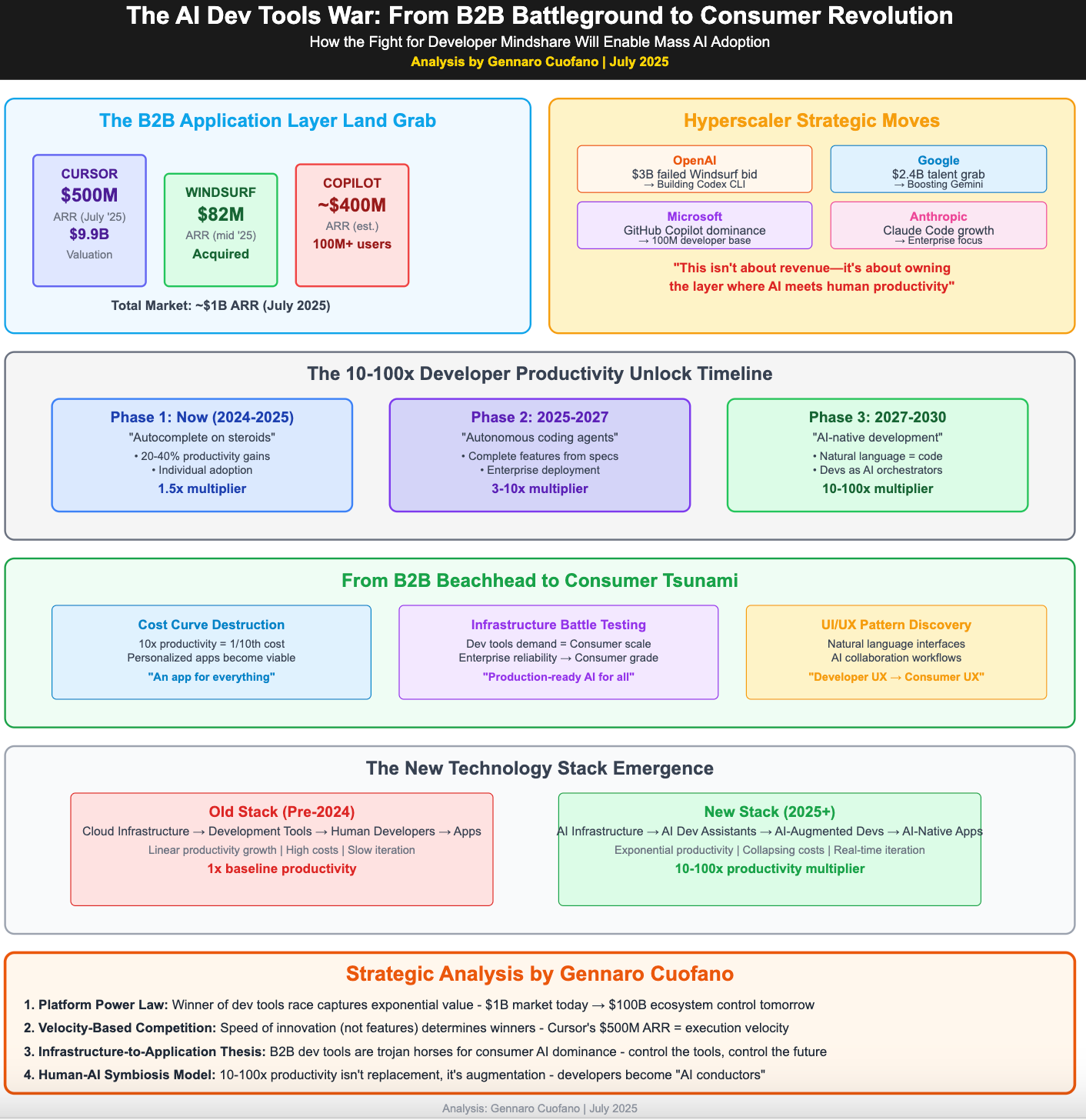AI Dev Tools: Prelude to the Consumer Age
I explained a few days back how the Windsurf Deal reshaped, possibly, the playbook for M&A in the AI space.
But there is way more to it. Within a 72-hour timeline, the unraveling of the OpenAI-Windsurf deal provided us with more insight into how the AI race is shaping up and what’s coming next than anything else that happened in the last few months.
The fight for AI coding tools isn't just another Silicon Valley turf war; it's the first real large-scale battleground on the B2B application layer, and it's revealing the playbook for how AI will achieve mass consumer adoption.
As Cursor rockets past $500M ARR and the Windsurf acquisition drama unfolds, we're witnessing hyperscalers like Microsoft, Google, and OpenAI position themselves not just for developer mindshare but for control of the infrastructure that will enable the next decade's AI transformation.
Why Dev Tools Are Ground Zero for AI's Application Layer
In the current strategic map of AI, I’ve clearly explained why most hyperscalers are adopting a double-edged strategy: infrastructure on one side and applications on the other.
Indeed, to maintain a competitive moat, these large AI players, while still advancing on the frontier of AI models, will need to rush toward locking in infrastructure (GPUs, AI Data Centers, and Supercomputing facilities) and distribution on the enterprise, B2B, and consumer sides for the application layer.
In short, the application layer will be a key determinant of success in the coming years.





